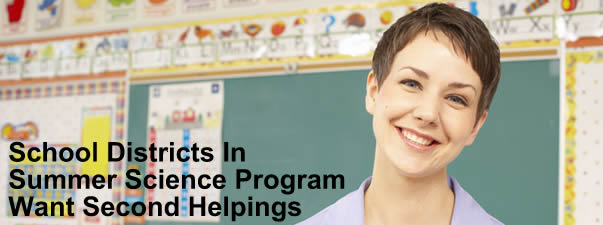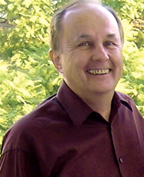The Summer Science Institute's purpose is to learn how best to teach math and science to their fourth- and fifth-grade students
February 1, 2007
By Russ Hudson
More than 50 fourth- and fifth-grade teachers from five area school districts
were put into classrooms last summer to improve their math and science
lessons. They grinded out two weeks of daylong classes while their every
move was monitored by Cal State Fullerton and Chapman College professors.
They said they loved it. Now, they want all the other teachers in their
school districts — Centralia, Westminster, La Habra City, Magnolia
and Savanna — to participate.
The Summer Science Institute, was financed by a $754,546 grant from
the U.S. Department of Education’s No Child Left Behind (NCLB) program.
The purpose was to help teachers upgrade their math and science knowledge
and learn how best to teach those subjects to their fourth- and fifth-grade
students to meet NCLB requirements.
“The teachers know the students and they know the standards, but they
don’t always know all the science behind it,” said Richard Lodyga,
a faculty member in CSUF’s Science Education Program and a participant
in the Summer Science Institute. “We wanted to help them learn how to
do hands-on teaching.
“I taught weather, Kristin Weaver-Bowman (CSUF Geological Science faculty
member) taught geology,” Lodyga said. “The teachers seemed to
really like it. I know I did.”
Michael Horton, science coordinator for the Orange County Department
of Education, which administered the summer program along with the Centralia
School District, could not agree more.
“We got feedback after the program from the districts’ assistant
superintendents and from the teachers. It went spectacularly. The professors
went above and beyond.
“Some of us sat in on the sessions. Rich (Lodyga) had equipment all over,
real-time weather graphs, they built thermometers and barometers. Kris (Weaver-Bowman)
had tables full of rock samples and charts, and moved the classroom outside
part of the time,” Horton said.
The teachers then went to teach the science they had just learned in
their own districts to summer-school students. The professors monitored
them, and together they refined how they taught. More such refining will
be done next summer, Horton said, and participants will teach their colleagues.


